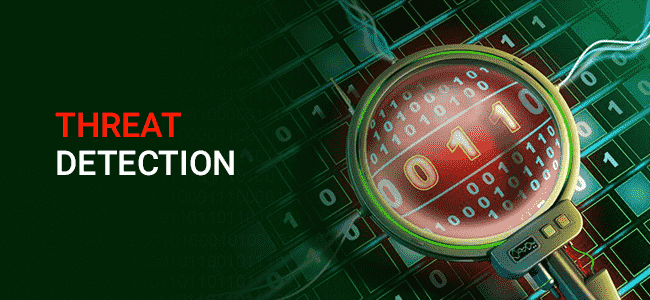In today’s digital age, cybersecurity has become a paramount concern for individuals, businesses, and governments alike. The rapid advancement of technology has brought about unprecedented convenience and connectivity, but it has also opened the door to a myriad of cyber threats. As these threats continue to evolve in complexity and scale, traditional cybersecurity measures are often insufficient and improvement of threat detection techniques is important.
As Sebastine, an Information Security Engineer specializing in Cybersecurity, DevOps, and CISO roles in Nigeria, highlights, Nigerian businesses need advanced techniques to effectively detect and respond to malicious activities. Traditional methods like antivirus software and firewalls are no longer adequate to address today’s sophisticated attacks. Here are advanced threat detection techniques that can significantly enhance cybersecurity across organizations in Nigeria:
1. Behavioral Analytics
Behavioral analytics focuses on identifying abnormal activity within networks by analyzing user behavior patterns. This technique uses machine learning algorithms to distinguish between normal and suspicious behavior, such as unusual login locations or access to sensitive data at odd times. These anomalies often indicate insider threats or compromised accounts.
- Use Case: Detecting unusual network traffic patterns that suggest malicious activity, such as a sudden increase in data transfer.
- Tools: Splunk, Darktrace, Exabeam
2. Machine Learning and AI-based Detection
Machine learning (ML) and artificial intelligence (AI) have become cornerstones of modern threat detection. These technologies learn from historical data and evolve to detect new attack patterns. AI and ML models can detect zero-day attacks and provide predictive threat intelligence, automating the identification of potential risks for faster incident response.
- Use Case: Identifying ransomware by detecting unusual encryption patterns before files are locked.
- Tools: Cylance, CrowdStrike Falcon, Vectra AI
3. Intrusion Detection and Prevention Systems (IDPS)
IDPS combines intrusion detection (monitoring) and intrusion prevention (responding). It works by analyzing network traffic for suspicious activities and blocking threats before they cause damage. Given the prevalence of phishing and brute-force login attempts in Nigeria, IDPS offers proactive defense.
- Use Case: Detecting and blocking unauthorized attempts to access a network from a remote location.
- Tools: Snort, Suricata, Palo Alto Networks
4. Endpoint Detection and Response (EDR)
EDR provides continuous monitoring and data collection from endpoints, such as computers and mobile devices, to quickly detect and respond to security incidents. It is particularly effective against malware and advanced persistent threats (APTs) that originate at the endpoint level.
- Use Case: Detecting malware on an employee’s compromised device before it spreads across the network.
- Tools: Carbon Black, CrowdStrike Falcon, Symantec Endpoint Detection
5. Deception Technology
Deception technology sets up decoys or honeypots that lure attackers into interacting with simulated systems. These decoys resemble critical assets like databases or networks, tricking attackers into revealing their tactics, which security teams can analyze and block.
- Use Case: Deploying fake servers that appear like important systems to divert attackers while alerting security teams.
- Tools: TrapX, Attivo Networks, Illusive Networks
6. Security Information and Event Management (SIEM)
SIEM systems aggregate and analyze data from networks, devices, and applications to detect security threats in real-time. By correlating logs and event data, SIEM tools offer a holistic view of security incidents, allowing for rapid detection and response.
- Use Case: Monitoring log data from different devices within a Nigerian financial institution’s IT infrastructure to identify coordinated attacks.
- Tools: Splunk, IBM QRadar, Wazuh SIEM
7. Threat Intelligence Platforms (TIP)
Threat intelligence platforms (TIP) gather, analyze, and share information on known vulnerabilities and indicators of compromise (IoCs). This proactive approach helps Nigerian cybersecurity professionals stay informed about emerging threats and apply preventative measures.
- Use Case: Sharing intelligence on phishing campaigns targeting Nigerian banks to prevent future breaches.
- Tools: Anomali, ThreatConnect, Recorded Future
8. Network Traffic Analysis (NTA)
NTA tools monitor traffic flows across networks to detect suspicious activities like data exfiltration or lateral movement. NTA is particularly effective in identifying sophisticated attacks that bypass traditional defenses.
- Use Case: Detecting unauthorized access to sensitive data by monitoring large data transfers over unusual network ports.
- Tools: ExtraHop, Cisco Stealthwatch, Corelight
9. Cloud Security Posture Management (CSPM)
With the increasing adoption of cloud services in Nigeria, ensuring cloud security is critical. CSPM tools detect misconfigurations, enforce compliance with cloud security policies, and monitor for real-time threats to prevent data breaches.
- Use Case: Detecting misconfigured cloud storage buckets that expose sensitive data in a Nigerian tech startup’s AWS environment.
- Tools: Palo Alto Prisma Cloud, AWS Security Hub, Microsoft Defender for Cloud
10. User and Entity Behavior Analytics (UEBA)
UEBA uses machine learning to track and analyze the behavior of users, systems, and applications. It identifies deviations from normal behavior that could indicate insider threats, compromised credentials, or malware.
- Use Case: Detecting a sudden spike in data downloads from an employee’s account, signaling potential data theft or account compromise.
- Tools: Splunk UEBA, Microsoft Sentinel, LogRhythm
Conclusion
Advanced threat detection techniques are essential for staying ahead of cyberattacks in Nigeria’s evolving threat landscape. By leveraging AI-based detection, behavioral analytics, SIEM, and deception technology, businesses can build a proactive cybersecurity defense. Whether securing on-premise systems, endpoints, or cloud infrastructure, these tools and techniques ensure comprehensive protection, mitigating risks and safeguarding sensitive data from sophisticated cyber threats.

